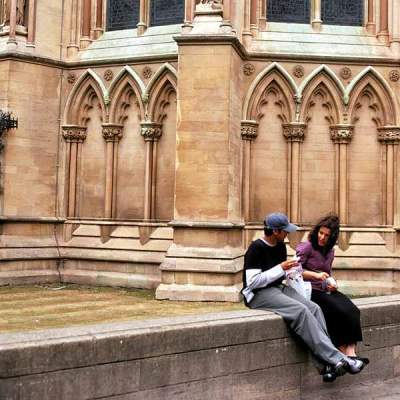He pushes you away grumpily and mumbles to leave him alone. Wow... the hangover you're nursing should be causing you to act like that, not your friend! As you gently shake him again, you catch sight of a glittering bracelet on his wrist—a MedicAlert, with his medical history. You remember your friend has diabetes. What should you do next?
The condition: Diabetes
Diabetes is a medical condition where the body is unable to regulate sugar (glucose) and insulin (a hormone that helps transport sugar to the rest of the body). Two potentially life-threatening problems can result: hypoglycemia, a significantly decreased level of glucose in the blood, and hyperglycemia, too much glucose caused by insufficient insulin to metabolize the sugar.
You are quite unlikely to encounter hyperglycemia, as it takes hours or days to develop; most diabetics are aware that it is happening and can adjust their insulin dose accordingly. In contrast, hypoglycemia can occur quite quickly and can be triggered by changes in routine, missed meals, exertion, stress and illness - all common when you're travelling. Much like your companion, diabetics suffering from hypoglycemia may appear disoriented, irritable, and even physically aggressive. They may sweat profusely and have an elevated heart rate. This condition can easily be confused with intoxication and, as a result, may be ignored until too late.
When things go wrong: First aid
What can you do for someone with hypoglycemia? If emergency services can be accessed quickly then call for medical help. But ultimately, whether in an ambulance, hospital or elsewhere, your friend needs sugar. There is plenty you can do in the moment—especially if medical resources are limited in the country or region where you are travelling.
If your friend is awake then the easiest way to administer sugar is by mouth. Glucose gel is often found in first-aid kits, but anything with sugar that can be easily absorbed will do—honey, granulated sugar, cake icing, or juice.
If your patient is unconscious, check if he is carrying an emergency injection kit that contains a drug called glucagon. This is a hormone that increases blood sugar levels by releasing glycogen, a concentrated form of glucose, from the liver. Improvement should be seen within ten minutes. When your friend regains consciousness, sugar can then be given by mouth. Since the use of a glucagon injector requires drawing medication into a syringe and injecting it into a muscle, this is a procedure that you should be briefed on by your friend or someone equally knowledgeable such as a health care professional.
Travel safe: Preventing problems
To avoid problems while travelling, you can help your companion manage his time, eating, and other routines that affect blood sugar levels. Breaks for eating are important, as well as time to check blood sugar levels. Carry food and water with you; if blood sugar levels are low, both hydration and eating are crucial.
Thankfully there were some cookies in your backpack, and you were able to give them to your friend, who started feeling better. A full breakfast was followed by a trip to the local medical clinic. The doctor gave the thumbs-up that your friend was stable, but not before suggesting strongly that you go easier on the long nights of dancing.
With a day's worth of snacks and water in your backpack, you set out to explore the volcanic beaches of Santorini. Sunbathing gives plenty of time for breaks… now where did that sunscreen go?
For a list of travel considerations for people with diabetes, please click here.
Mike Webster is the Canadian Executive Director of Wilderness Medical Associates, an international organization dedicated to the education and research of medicine and first aid in remote and unconventional settings.
Add this article to your reading list



